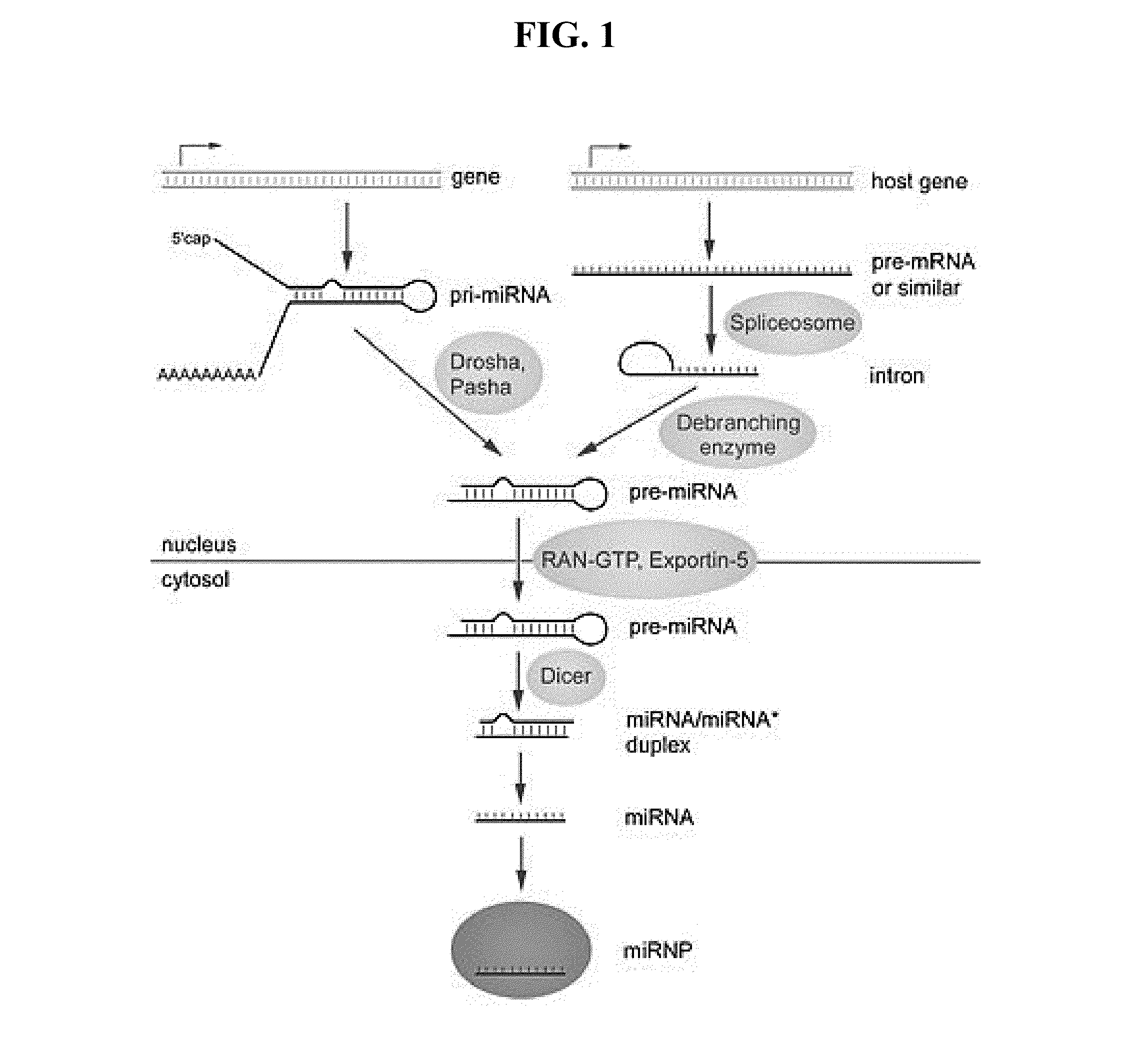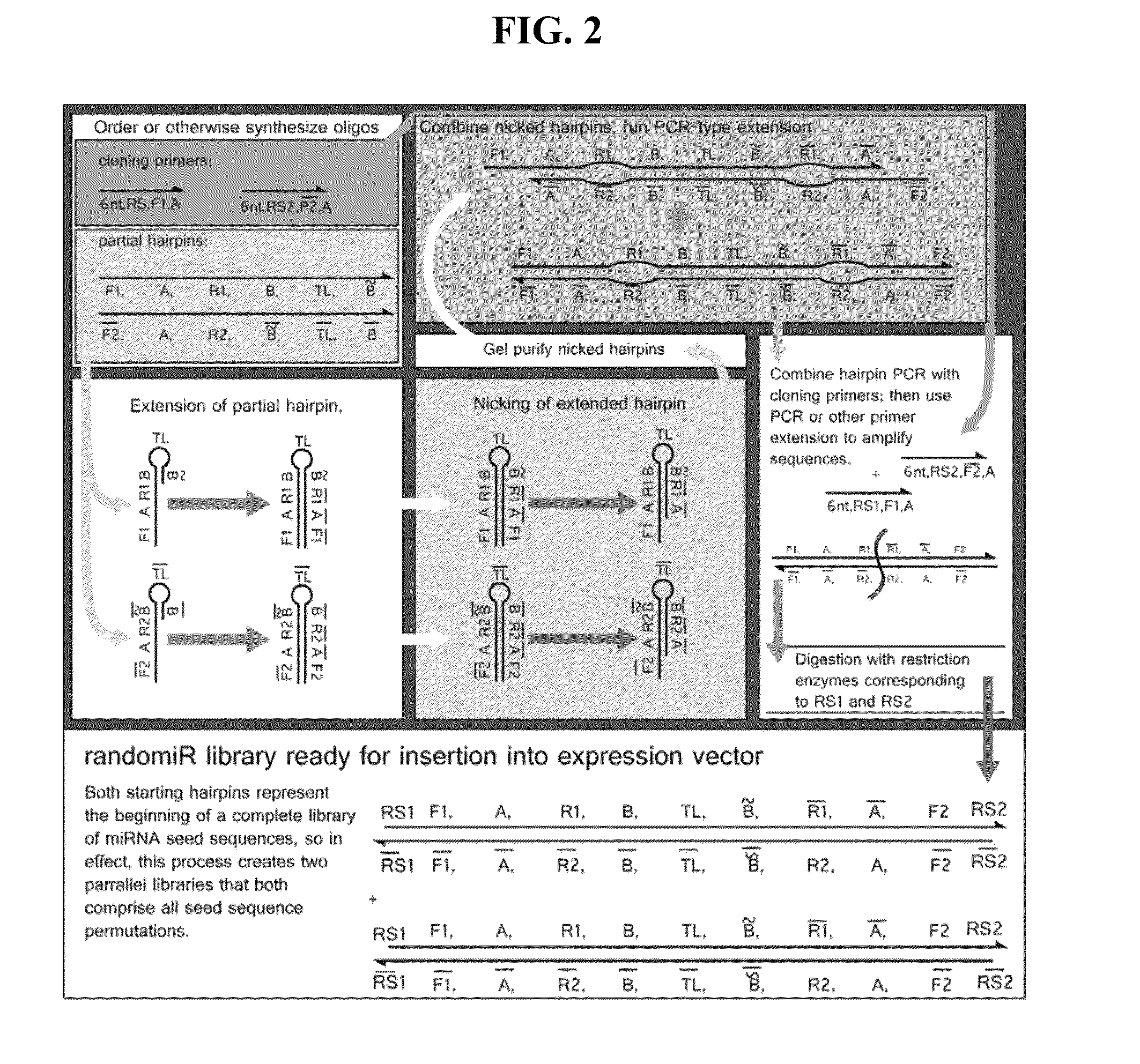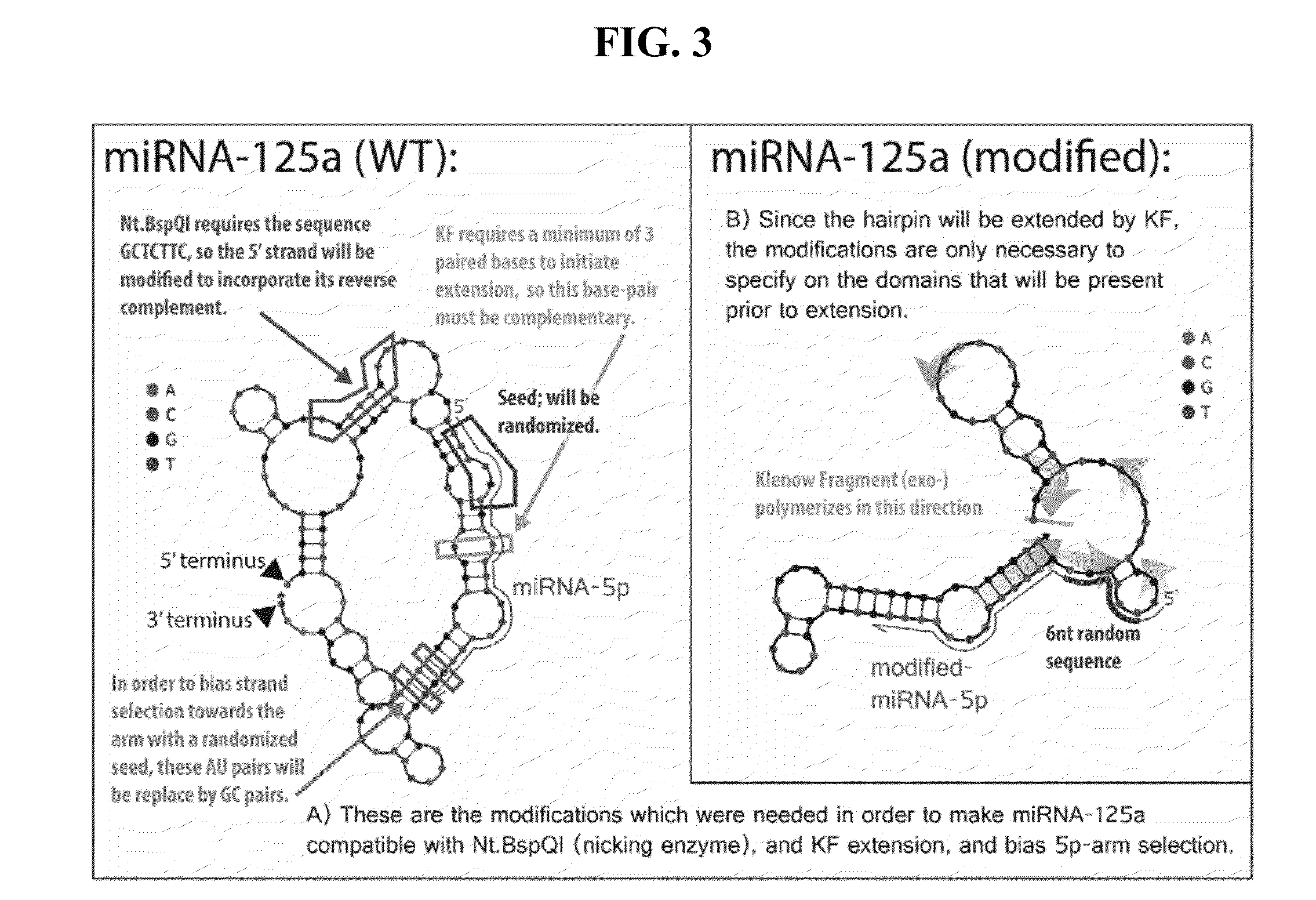Pri-mirna libraries and methods for making and using pri-mirna libraries
- Summary
- Abstract
- Description
- Claims
- Application Information
AI Technical Summary
Benefits of technology
Problems solved by technology
Method used
Image
Examples
example 1
Pri-miRNA Scaffole Library Construction and Characterization
[0152]This Example demonstrates the construction and characterization of a representative pri-miRNA library comprising random pri-miRNA sequences based upon a miR-125a scaffold.
[0153]Sequences were uploaded to nupack.org and ViennaRNA for secondary structure (MFE) and binding analysis. These in silico simulations were used to finalize the design and ensure structural requirements for the actual construction of the inserts were met with minimal difference between wild-type miR-125a (miR-125a WT) and the modified version (randomiR-125a). The resulting oligos and primers were ordered from MWG|Operon (MWG) and assembled in-house.
[0154]Partial hairpins were extended using Klenow Fragment (exo−) (New England Biolabs; NEB), nicked by Nt.BspQI (NEB), gel purified on 4% agarose (Sigma-Aldrich; S-A) with 1× TBE buffer, extracted by Qiagen Gel Extraction Kit, and used in PCR (Phusion, NEB) with primers complementary to the flanking re...
PUM
 Login to View More
Login to View More Abstract
Description
Claims
Application Information
 Login to View More
Login to View More - R&D
- Intellectual Property
- Life Sciences
- Materials
- Tech Scout
- Unparalleled Data Quality
- Higher Quality Content
- 60% Fewer Hallucinations
Browse by: Latest US Patents, China's latest patents, Technical Efficacy Thesaurus, Application Domain, Technology Topic, Popular Technical Reports.
© 2025 PatSnap. All rights reserved.Legal|Privacy policy|Modern Slavery Act Transparency Statement|Sitemap|About US| Contact US: help@patsnap.com



